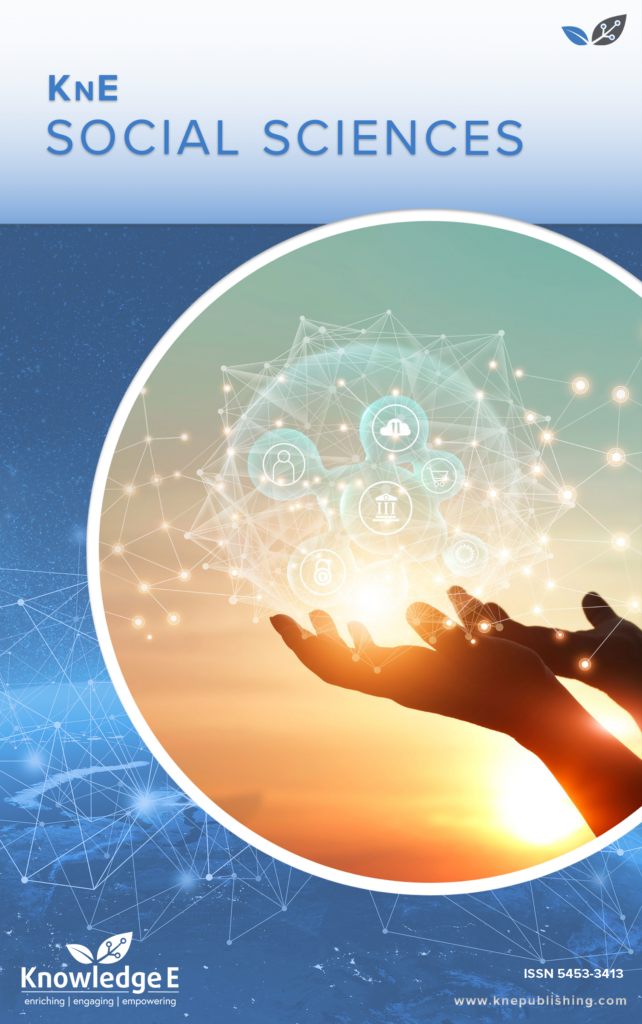
KnE Social Sciences
ISSN: 2518-668X
The latest conference proceedings on humanities, arts and social sciences.
Utilization of Historical Sites as a Learning Source Based on Outdoor Learning
Published date: Oct 12 2022
Journal Title: KnE Social Sciences
Issue title: 3rd International Conference on Geography and Education (ICGE)
Pages: 289–300
Authors:
Abstract:
History learning should be a serious concern in the world of education. In practice in the field, especially at the high school level, it is very difficult to achieve the planned indicators, goals and competencies of history learning. Moreover, if history learning takes place in the classroom, the learning activities of students may be less effective compared to other learning, and the students may be less than optimal in participating in their learning. Therefore, this article offers an alternative solution by utilizing local historical sites as learning resources. The research model used was the historical method for the content of the historical material and the qualitative model for the preparation of learning schemes. Given the many abandoned historical sites around us, this article explores the use of the Cunggrang Inscription as a learning resource with activities based on outdoor learning.
Keywords: learning history, learning Resources, outdoor learning
References:
[1] I. G. Widja, “Pembelajaran Sejarah Yang Mencerdaskan Suatu Alternatif Menghadapi Tantangan dan Tuntutan Jaman yang Berubah,” Jurnal Pendidikan Sejarah Indonesia, vol. 1, no. 2, pp. 117–134, 2018.
[2] R. Wiriaatmadja, Pendidikan Sejarah di Indonesia: Perspektif Lokal, Nasional, dan Global. Historia Utama Press, Jurusan Pendidikan Sejarah FPIPS, Universitas …, 2002.
[3] S. H. Hasan, “Pendidikan sejarah untuk memperkuat pendidikan karakter,” Paramita: Historical Studies Journal, vol. 22, no. 1, 2012.
[4] W. D. Sulistyo and M. A. Dewanti, “‘Sumberawan water site’: History, sustainable preservation and use as a learning source,” in Development, Social Change and Environmental Sustainability: Proceedings of the International Conference on Contemporary Sociology and Educational Transformation (ICCSET 2020), Malang, Indonesia, 23 September 2020, 2021, p. 34.
[5] J. Sefton-Green and O. Erstad, “Researching ‘learning lives’–a new agenda for learning, media and technology,” Learning, Media and Technology, vol. 42, no. 2, pp. 246–250, 2017.
[6] M. Z. Rosyid, H. Sa’diyah, and N. Septiana, Ragam media pembelajaran. CV Literasi Nusantara Abadi, 2021.
[7] S. I. Hana and W. D. Sulistyo, “The Utilization of Colonial Government Buildings in Malang as the Learning Sources,” in International Conference on Social Studies and Environmental Issues (ICOSSEI 2019), 2020, pp. 279–283.
[8] H. Bilton, Outdoor learning in the early years: Management and innovation. Routledge, 2010.
[9] B. Pasuruan, Kabupaten Pasuruan dalam Angka 2022. Pasuruan: BPS Pasuruan, 2022. [Online]. Available: https://pasuruankab.bps.go.id/
[10] B. Pasuruan, Kecamatan Gempol dalam Angka 2021. Pasuruan: BPS Pasuruan, 2021. [Online]. Available: https://pasuruankab.bps.go.id/
[11] S. Widiah, “Studi Historis Prasasti Cunggrang Sebagai Sumber Sejarah pada Masa Mpu Sindok Tahun 929-947 M,” Avatara, vol. 6, no. 1, 2018.
[12] M. Alivizatou-Barakou et al., “Intangible cultural heritage and new technologies: challenges and opportunities for cultural preservation and development,” Mixed reality and gamification for cultural heritage, pp. 129–158, 2017.
[13] E. A. Thomas-Hoffman, “Cultural preservation and protection,” Downloaded on September, vol. 9, 2015.
[14] D. Abdurahman and A. Safa, Metodologi penelitian sejarah. Ar-Ruzz Media, 2007.
[15] J. Gerring, “Qualitative methods,” Annual Review of Political Science, vol. 20, pp. 15–36, 2017.
[16] A. A. Munandar, Kalpalata: data dan interpretasi arkeologi. Jakarta: Wedatama Widya Sastra, 2019.
[17] A. A. Munandar, Arkeologi Pawitra. Jakarta: Wedatama Widya Sastra, 2016.
[18] G. A. Sadewa, “Penganugerahan Sima Tulangan, Cunggrang, Dan Pucangan Di Lereng Gunung Penanggungan Abad X-Xi Berdasarkan Prasasti-Prasasti Raja Balitung-Airlangga,” Avatara, vol. 9, no. 1, 2020.
[19] D. R. Nurhajarini, “Gemeente Pasuruan 1918-1942,” Kota dan Pengembangan Wilayah, p. 819, 2010.
[20] M. N. L. Khakim, O. Winasari, and S. Y. S. Asri, “Identification of tourism potentials in Ancient Bathing Sites of Pasuruan, Indonesia,” in IOP Conference Series: Earth and Environmental Science, 2020, vol. 485, no. 1, p. 012099.
[21] G. H. Purwoko, “Pattern of Entrepreneurship Approach As Effort to Develop Belahan Temple At Wonosunyo Village, Gempol Sudistrict, Pasuruan, As Tourism Spot,” 2014.
[22] N. S. Prihatini, “Sesaji in Java Community Tradition,” Surakarta, 2018.
[23] R. Sibarani and T. Lubis, “The Performance of Ruwatan in Javanese Community: An Anthropolinguistic Approach,” Tradition and Modernity of Humanity, vol. 2, no. 1, pp. 1–7, 2022.